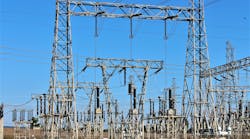The California Independent System Operator Corp. has released its “Demand Response and Energy Efficiency Roadmap: Maximizing Preferred Resources,” laying the path for advancing low-carbon demand response (DR) and energy efficiency (EE) resources. Smart grid technologies such as DR and EE are key elements of the state’s transition toward an ever more reliable and environmentally sustainable electric power system.
In collaboration with the California Public Utilities Commission and the California Energy Commission as well as industry stakeholders, the ISO unveiled its roadmap to advance DR and EE. It builds upon the California’s progressive policies enabling non-polluting distributed energy resources such as microgrids, rooftop solar, electric vehicles and energy storage facilities. The ISO envisions these resources contributing to the low-carbon, flexible capacity needed to maintain real-time system balance and reliability supporting the integration of renewable energy.
“There will come a day in the not-too-distant future when the policies, tools and processes in place will transform the electric grid in California into a highly-sophisticated two-way network in which nearly everyone can contribute to the reliable and efficient management of a greener electricity grid,” said Steve Berberich, President and CEO of the California ISO.
The roadmap anticipates the magnitude, type, timing and geographic distribution of newer, more flexible resources. It lays out the plan for lowering market barriers that currently prevent DR/EE from competing alongside conventional resources.
“Utility energy efficiency and demand response efforts are already contributing to lower costs and reduced environmental impacts. Implementing new, more responsive resources on a system-wide scale using a market mechanism will further advance California’s clean energy goals. It could also replace or defer investments in more expensive energy infrastructure,” said Director of Regulatory Affairs Heather Sanders who authored the DR and EE Roadmap.
The roadmap identifies four integrated pathways essential to bringing online a robust set of DR and EE solutions over the next three years:
1) Load Reshaping Path that focuses on using incentives to modify consumption patterns to “flatten” demand, thus reducing the need for peaking generation capacity.
2) Resource Sufficiency Path that ensures enough resources with needed operational characteristics available at the right places and at the right times.
3) Operations Path that makes the best use of any and all resources (demand and supply) and involves the ISO changing some existing policies as well as modifying or developing new market products to expand DR market participation.
4) Monitoring Path that provides mechanisms for monitoring progress and outcomes to ensure that the initiatives accomplish their objectives on time.
DR and EE as well as other “preferred resources” play key roles in the joint agency Southern CA Reliability Plan that outlines the ideal resources to replace the now-retired San Onofre Nuclear Generating Station as well as backfill the potential loss of about 6,000 MW of aging coastal power plants. The units are at risk of retiring starting in 2017 to comply with new once-through cooling regulations limiting the use of ocean water to cool power plant turbines.


